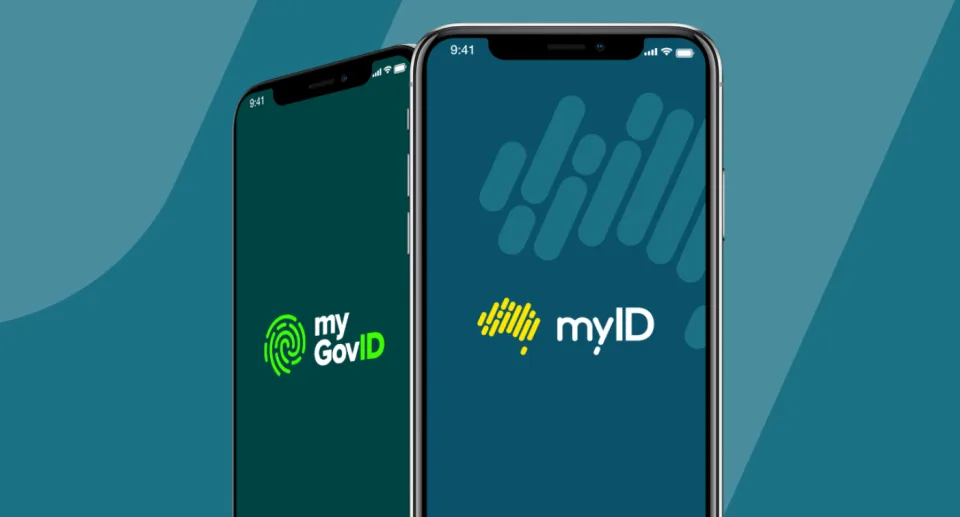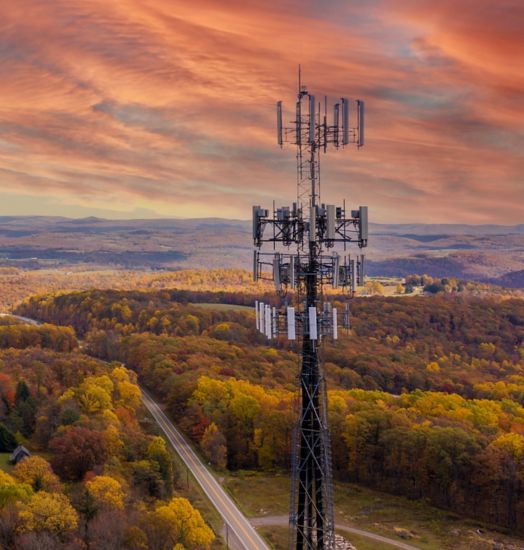Massive Password Leak Hits Australians: 16 Billion Passwords Leaked in Global Breach

Are You at Risk? Here’s What You Need to Know A record-breaking 16 billion usernames and passwords have been leaked online in what experts are calling the largest data breach in internet history. The compromised data includes logins for widely used services such as Apple, Google, Facebook, and even government platforms like myGov. The scale of this breach has led to serious warnings from companies like Google and agencies including the FBI, advising users to change passwords immediately and be alert for scams. If you use any online services for email, banking, social media or accessing government portals, your personal data could already be at risk. Here’s what the breach means, how to find out if your accounts have been affected, and how Mobile Computer Geeks can help you stay protected. What the Breach Means for You This isn’t just another recycled data leak. According to researchers at Cybernews, this breach involves new, unreleased login credentials collected by malicious software known as infostealers. These programs harvest logins directly from infected computers and mobile devices. The leaked data includes: With this information, cybercriminals can gain access to your email, cloud accounts, social media, online banking, and more. Google has urged users to update their passwords as a precaution. Meanwhile, phishing and SMS scams (smishing) are expected to spike as criminals attempt to exploit this stolen data. How to Check If You’ve Been Affected Steps to Protect Your Accounts Even if you haven’t noticed anything unusual yet, taking the following steps now will greatly reduce your risk: Some set up guides we reccomend: How Mobile Computer Geeks Can Help Don’t Wait for a Breach to Affect You With billions of credentials leaked online, taking action now is the best way to protect yourself. Even if your information wasn’t part of this specific leak, setting up better account security now will prevent future problems. Contact Mobile Computer Geeks today to book a security consultation. We’ll help you secure your digital life quickly and easily.
Australia’s Growing Reliance on Starlink: Opportunity or Risk?

In recent years, Elon Musk’s Starlink satellite internet service has become a game-changer for connectivity across Australia. With its ability to deliver high-speed internet to remote and regional areas, Starlink now serves over 200,000 Australians, making it an indispensable part of the national telecoms landscape. Emergency services and government agencies have embraced the technology, investing millions in integrating it into fire trucks, police vehicles, and even naval vessels. But as with all technological leaps, Starlink’s growing dominance raises significant questions about reliance, sovereignty, and security. The Starlink Advantage Starlink’s low-Earth orbit (LEO) satellites offer a marked improvement over traditional satellite internet services. Unlike geostationary satellites, which orbit much farther from Earth, LEO satellites provide lower latency and higher speeds. This has allowed Australians in remote areas to access the kind of internet quality previously reserved for urban centers. For emergency services, this technology is transformative—providing live video streaming and reliable communication during critical operations in areas without mobile coverage. The Risks of Overdependence Despite its benefits, reliance on a single provider controlled by Elon Musk poses a risk. Musk’s unpredictable actions, such as limiting Starlink access in Ukraine during a military conflict, highlight the potential for service disruptions. If Starlink were to withdraw its services due to political or business decisions, Australia’s internet infrastructure—particularly in regional and emergency sectors—could face significant disruption. Moreover, with over $50 million already invested in Starlink hardware and services by Australian governments, this dependence could grow further. Analysts warn that relying on one individual’s goodwill to maintain essential services is a strategic vulnerability. Competition and Alternatives While alternatives to Starlink, such as Amazon’s Project Kuiper and Eutelsat OneWeb, are emerging, they remain years away from offering widespread service in Australia. Developing a sovereign satellite network is an ideal solution but presents immense technical and financial challenges, including the need for hundreds of satellites and reliable rocket launch capabilities. Ironically, SpaceX—the parent company of Starlink—currently dominates the global rocket launch industry, creating another layer of dependence. A Call for Diversification To ensure continuity of service, Australia must diversify its satellite internet providers and invest in sovereign capabilities. Regulatory frameworks, such as those proposed under the Security of Critical Infrastructure Act, are a positive step toward mitigating risks, but more proactive measures are needed. Encouraging competition and fostering Australian-based space capabilities will be crucial for long-term resilience. Conclusion At Mobile Computer Geeks, we understand the importance of reliable internet for both individuals and businesses. While Starlink has revolutionized connectivity for many Australians, its dominance raises valid concerns about security and sovereignty. As the situation evolves, staying informed and advocating for diversified infrastructure will ensure a stable, independent, and secure digital future for all Australians. If you’re looking to integrate Starlink or other cutting-edge technologies into your home or business, our team can provide expert advice and support. Contact Mobile Computer Geeks today to explore the best options for your connectivity needs. Image by vecstock on Freepik
Social Media Shake-Up: Proposed Age Rules and Their Impact on Everyday Aussies

The Australian government is making waves with its latest proposal to enforce a minimum age of 16 for social media users. This initiative, backed by Prime Minister Anthony Albanese, aims to address the growing concerns around the mental health and safety of young people online. Platforms like Facebook, Instagram, TikTok, and X (formerly Twitter) will be required to comply with these new regulations if the law is passed. Here’s what it means for everyday Australians, families, and tech users. What’s Behind the Proposed Legislation? The age restriction proposal stems from mounting concerns about the negative effects of social media on younger users. These include mental health issues, exposure to harmful content, and increased vulnerability to online bullying. Prime Minister Albanese described the move as necessary to counter the damage social media is causing to children’s well-being. “We must take stronger action to protect our kids,” he said, emphasizing the need for a safer digital environment. (AP News) What Are the Key Features of the Proposal? How Will It Impact Everyday Australians? For most adult users, the changes might not seem impactful at first glance. However, the implementation of age-verification systems could lead to more rigorous sign-up processes and raise questions about privacy. Everyday users might be required to share personal information or documents to prove their age, sparking concerns about data security and how companies manage sensitive information. (The Daily Telegraph) For those using social media professionally—whether for marketing, content creation, or communication—the landscape could shift. Platforms may tighten content moderation policies to align with the new rules, potentially influencing user engagement and visibility. Implications for Families Families with children under 16 will likely face the most noticeable changes. While the age restrictions aim to protect younger users, they could also lead to new challenges: Child safety advocates view this as a step in the right direction, while others worry it could inadvertently push underage users toward unregulated platforms. (People Magazine) Tech Users and the Wider Digital Community For tech enthusiasts and everyday users, the legislation could bring both opportunities and hurdles. Social media platforms will need to adopt sophisticated age-verification systems, which could involve: These changes might also increase the demand for professional tech support to navigate new processes and address privacy concerns. (The Daily Telegraph) When Will This Take Effect? The legislation is expected to be introduced during Parliament’s final sessions in 2024. If passed, the new rules will give social media platforms one year to adapt their systems. By late 2025, Australians could see a significantly different digital landscape. (AP News) The Bigger Picture Australia’s move to introduce a social media age restriction is part of a global trend toward regulating digital spaces. As governments worldwide grapple with balancing freedom and safety online, these changes could pave the way for a healthier relationship between technology and its youngest users. For families, everyday Australians, and tech enthusiasts, this legislation underscores the importance of staying informed and proactive in managing online activity. Whether it’s setting up parental controls or adapting to new verification processes, navigating the evolving digital world will require collective effort and education. Need help managing your tech setup in light of these changes? Contact Mobile Computer Geeks for expert advice and solutions tailored to your needs. Let’s work together to ensure your online experience remains safe, secure, and hassle-free.
Is Telstra’s 3G Shutdown Causing Issues with Your Calls? Here’s What You Need to Know

Telstra has begun shutting down its 3G network across Australia, a transition that might leave some customers facing unexpected problems with their calls. If your phone relies on the 3G network for voice calls, you could be among those affected. This is especially true for certain older 4G and early 5G models that don’t support Voice over LTE (VoLTE), which enables calls over the newer 4G and 5G networks. If you’re experiencing call issues or have lost voice services entirely, here’s what you need to know—and how to fix it. What Does the 3G Shutdown Mean for Your Device? The Telstra 3G network has been a mainstay for years, providing reliable voice services for many users. Now, with Telstra redirecting resources to strengthen 4G and 5G capabilities, 3G is being phased out across Australia. For most customers with recent phones, this shift will be seamless. However, some older 4G and early 5G devices that lack VoLTE may run into problems, as these devices would typically use 3G to handle voice calls. Without VoLTE, these phones can’t switch to 4G or 5G for voice calls, leading to dropped calls, connection issues, or even the inability to make calls at all. How to Tell if Your Device is Affected Not sure if your device has VoLTE? Here are some quick steps to check if your device could be affected: Steps You Can Take to Restore Call Services If your device is affected, here are steps you can take to make sure you’re able to make calls, including emergency calls, without issue: How Mobile Computer Geeks Can Help If you’re experiencing call issues and suspect your device may be affected by the 3G shutdown, Mobile Computer Geeks is here to assist. We provide practical support to get you back online, including: Don’t let the 3G shutdown disrupt your calls. Contact Mobile Computer Geeks today to restore your connectivity and get back to seamless communication. For further reading on Telstra’s 3G shutdown, visit Telstra’s announcement or find more information on impacted devices from WhistleOut.
Major Update for myGovID Users: Rebranding to myID and Staying Scam-Safe

The Australian government’s digital identity app, myGovID, is getting a new name and look, transitioning to myID in mid-November. This rebranding aims to simplify digital access by reducing confusion between myGovID and the separate myGov service. Importantly, myID will retain the same functionality, allowing users to securely log into services like Centrelink and other government portals. What Users Need to Know For the over 13 million Australians currently using myGovID, the transition to myID will be seamless. There’s no need to set up a new account, change login details, or adjust identity verification settings. Your existing app will automatically update, or you can update it manually from the App Store or Google Play once the new version is available. This update will only affect myGovID, while the separate myGov app remains unchanged. Beware of Scams As with any major online change, scammers are already trying to exploit the transition by sending fraudulent messages claiming to be from myGovID or myID. These scams often include links or prompts to download malicious software. To avoid falling victim: How Mobile Computer Geeks Can Help At Mobile Computer Geeks, we know staying secure online can be challenging, especially with new changes and scams. Our experienced technicians can assist you with a smooth transition to myID, help you secure your devices against scams, and keep your systems updated. We offer both remote and in-person support to ensure your online experience remains safe and seamless. Contact us today for expert help, and let us take care of your digital security so you can navigate the myID transition with confidence.
Telstra’s 3G Network Closure: What You Need to Know Before 28 October 2024

Telstra is shutting down its 3G network on 28 October 2024, affecting millions of devices across Australia. This includes older phones, smartwatches, tablets, personal emergency alarms, EFTPOS terminals, and security alarms. If your device only works on 3G or relies on 3G for certain functions, you’ll need to upgrade to stay connected. How to Check if You’re Affected: To see if your mobile phone is impacted, simply text “3” to 3498. Telstra will respond, letting you know if your device requires an upgrade. If your phone is not 4G VoLTE (Voice over LTE) capable, or if it uses 3G for emergency calls, it will stop working after the shutdown. Why is this Happening? Telstra is shutting down its 3G network to free up spectrum for newer technologies like 4G and 5G. This will lead to faster, more reliable services for Australians. However, many older devices, particularly those purchased before 2019, may not be able to connect to Telstra’s 4G or 5G networks. Importantly, older 3G phones may lose the ability to make Triple Zero (000) emergency calls, which is why it’s crucial to upgrade. What Should You Do? Triple Zero (000) and Emergency Calls: After 28 October, any 3G-only device or non-VoLTE phone will no longer be able to make emergency calls over Telstra’s network. This is part of Telstra’s legal obligation to ensure all mobile devices can access Triple Zero (000) over 4G networks. If your device doesn’t meet these requirements, it will be blocked from the network, meaning you won’t be able to make calls or use mobile data until you upgrade. Other Devices Impacted: In addition to phones, other devices like smartwatches, EFTPOS machines, personal emergency alarms, and some Internet of Things (IoT) devices may also be affected by the 3G shutdown. If you rely on any of these, it’s important to check their compatibility with 4G and upgrade if necessary. What If You Don’t Upgrade? If your device remains on 3G after 28 October 2024, it will lose access to Telstra’s network, including the ability to make emergency calls. Prepaid customers will have their auto-recharge payments cancelled, and other customers may be disconnected by 20 November if they don’t upgrade, potentially losing their mobile number. How Mobile Computer Geeks Can Help: At Mobile Computer Geeks, we’re here to help you through this transition. We can assist you in checking your devices, upgrading to compatible technology, and making sure your services stay connected. Whether it’s your phone, smartwatches, or any other device, we can guide you through the process to ensure you’re ready for the 3G closure. For more detailed information, visit the official Telstra 3G Network Closure page. Don’t wait—contact Mobile Computer Geeks today for expert advice and assistance with Telstra’s 3G shutdown!
Australia’s Path to Regulating Big Tech and What It Means for You

Australia is at the forefront of tackling online harms by pushing for stricter regulations on social media platforms. Two significant policies are under consideration: the potential ban on teenagers accessing social media and the introduction of a “duty of care” for tech companies to protect users from harmful content. Teen Social Media Ban: A First of Its Kind Australia is contemplating an outright ban on teenagers using social media—a move no other country has successfully implemented. Governments in France, the UK, and parts of the US have tried to impose age restrictions, but enforcement hurdles and opposition have made these attempts mostly ineffective (Reset Tech Australia/BowerGroupAsia). For example, France passed a law in 2023 requiring social media companies to block access to children under 15 unless approved by their guardians, but a year later, enforcement is still an issue due to technical barriers (Information Age). Similarly, US states have tried various approaches, but free speech concerns and difficulties with age verification have limited their success (Lowy Institute). Critics argue that while the intent behind the ban is to protect teen mental health, the ban might fail to address the root issue: unsafe online platforms. If teens manage to bypass the ban, they could still be exposed to harmful content. Furthermore, enforcement would be complex and might shift the burden to parents, who may need to grant permission for social media use, instead of holding platforms accountable for user safety (Lowy Institute/Information Age). A Duty of Care for Big Tech In addition to the proposed social media ban, Australia is exploring a “duty of care” policy. This would legally require tech companies to proactively prevent harm rather than waiting for users to report individual harmful content. Platforms like Meta and X would need to ensure their systems are designed to protect users from online dangers such as hate speech, cyberbullying, and misinformation (BowerGroupAsia/Lowy Institute). The idea mirrors the Digital Safety Act implemented in the EU, which mandates that platforms take responsibility for user safety through fines that can total up to 6% of a company’s global revenue (Information Age). If this duty of care is introduced, Australian authorities could impose serious financial penalties on companies that fail to comply, pushing them to take online safety more seriously. This proactive approach, rather than a reactive one, would mean that platforms must build safety into their design and operation from the start. The Takeaway For everyday Australians, these proposed policies mark a significant shift towards a more regulated digital space. If implemented, users—particularly teens—could see safer online environments with less exposure to harmful content. However, practical challenges around enforcement remain, particularly in preventing teens from bypassing bans and ensuring tech companies take responsibility. As these changes evolve, it’s essential for individuals and families to stay informed about how these regulations will affect their digital experiences. Parents, in particular, may need to understand how these laws impact their children’s online access and what protections are in place. How Mobile Computer Geeks Can Help As Australia moves toward tighter online regulations, Mobile Computer Geeks can assist in ensuring your family or business adapts to these changes smoothly. Whether it’s setting up parental controls, enhancing cybersecurity, or educating users on safer browsing habits, we’re here to guide you through this evolving digital landscape. Our team can help you protect your digital life with practical solutions tailored to these new regulations, ensuring your online safety and privacy.
How the Digital Era is Helping Create a Greener Planet

When people think of technology, they often associate it with energy consumption and e-waste. However, technology—when used thoughtfully—can be a powerful tool for reducing our carbon footprint and fostering a greener planet. From cloud computing to smart home devices, digital transformation allows everyday Australians and corporations to actively contribute to environmental sustainability. Here’s how. 1. Cloud Computing Reduces Physical Infrastructure Cloud computing has transformed how data is stored and processed. By switching to cloud services, companies can eliminate the need for energy-hungry on-site servers and reduce their energy consumption. Many major cloud providers, such as Google and Amazon, now operate data centers powered by renewable energy, significantly lowering their environmental impact( Independent Australia). For individuals, using cloud services means fewer power-hungry personal devices. Your data is stored in remote servers optimized for energy efficiency, which reduces the environmental toll. 2. Remote Work and Virtual Meetings Reduce Travel Digital tools like video conferencing have revolutionized how we work. Remote work and virtual meetings drastically reduce the need for commuting and business travel, cutting fuel consumption and emissions. This reduction in travel has a direct, positive impact on lowering Australia’s greenhouse gas emissions( Independent Australia). 3. Smart Technology Promotes Energy Efficiency Smart home and office devices, such as thermostats and energy monitors, help optimize power use by reducing unnecessary consumption. Smart technologies allow you to control and monitor your energy usage in real time, ensuring you only use power when needed. Over time, this contributes to significant energy savings for both individuals and businesses( Tech Council Australia). 4. E-Waste and Responsible Recycling E-waste is one of the biggest environmental challenges created by the digital era. Millions of tonnes of electronics are discarded each year, with many ending up in landfills. However, recycling programs are gaining traction. By recycling old devices through official programs, you can ensure your obsolete electronics are disposed of properly, reducing environmental harm( Tech Council Australia). 5. Green Data Centers and Renewable Energy Data centers, the backbone of the digital world, are increasingly powered by renewable energy. As cloud services grow, many companies are committing to using solar and wind energy to power their operations. For everyday Australians, this means that using online services, streaming, and cloud storage can now have a smaller carbon footprint( Independent Australia). How You Can Help As an individual: As a corporation: Final Thoughts The digital era presents both challenges and opportunities for creating a greener planet. By making informed choices, both individuals and corporations can play a pivotal role in reducing their carbon footprint and promoting sustainability. From reducing travel with remote work to adopting energy-efficient devices, technology can truly help create a more sustainable future. At Mobile Computer Geeks, we’re committed to helping you make greener tech choices. We’ve partnered with local green waste recyclers to ensure that obsolete devices are responsibly recycled, reducing e-waste and helping to preserve our planet. Whether you need advice on energy-efficient devices or help recycling old tech, we’re here to assist. Contact us today to learn how we can support your sustainability journey! Book a spot with us today!
Australia’s Federal Budget Plans for Digital ID: What You Need to Know

Australia’s 2024-25 federal budget includes a significant investment of $288.1 million to accelerate Digital ID adoption, aiming to transform how Australians engage with government services. Here’s a look at what Digital ID is, why Australia is adopting it, what changes you can expect, and how to prepare. What is Digital ID? Digital ID is a secure, electronic identification system that allows individuals to verify their identity online, streamlining access to services like tax filing, healthcare, and welfare benefits. By storing your identity credentials in a secure digital format, Digital ID eliminates the need for physical documents during verification processes, enhancing both convenience and security. Why is Australia Adopting Digital ID? The push towards Digital ID is part of a broader effort to modernize service delivery, improve security, and reduce administrative burdens on government agencies. Digital ID aims to reduce identity theft, minimize fraud, and provide a seamless experience when accessing government services. With the new budget allocation, Australia is set to enhance this infrastructure, making digital interactions safer and more efficient for all citizens. What Changes Can Australians Expect? Australians will experience several key changes with Digital ID adoption: Security Measures for Digital ID The Australian government has implemented rigorous security protocols to safeguard Digital ID information: What Information is Collected—and What Isn’t? Digital ID only collects information necessary for verifying your identity, such as your name, date of birth, and identification documents like a driver’s license or passport. It does not gather unrelated sensitive data such as financial information, browsing history, or location data. Australian privacy laws strictly regulate the use and sharing of Digital ID information, protecting your privacy and ensuring data is used appropriately. How to Prepare for Digital ID Adoption Conclusion Australia’s move towards Digital ID is a pivotal change in how citizens engage with government services, promising improved security, reduced fraud, and a more convenient digital experience. How Mobile Computer Geeks Can Help Mobile Computer Geeks can assist with the Digital ID transition by offering support in setting up your Digital ID, ensuring your devices are secure, and providing personalized guidance on managing your privacy settings. Whether you need help understanding the system or troubleshooting any issues, our team is here to make the Digital ID shift easy and stress-free. Contact us today to get started and stay ahead in Australia’s digital landscape!
Managing Your Privacy Settings on Webpages: Tips from Mobile Computer Geeks

We’ve all been there: you visit a new website, and you’re immediately bombarded with questions about which cookies you’d like to accept. It can feel overwhelming and frustrating, especially when you’re just trying to access the content you need. But managing your privacy settings is crucial for protecting your personal data online. At Mobile Computer Geeks, we’re here to help you navigate this process with ease. Understanding Cookies and Privacy Settings Cookies are small files that websites use to store information on your device. They can be helpful, such as remembering your login details or personalizing your browsing experience. However, they can also be used to track your online activity for marketing purposes, which raises privacy concerns. Why Privacy Management Takes Time In Australia, managing privacy settings often takes longer than in regions like the European Union, where stronger privacy laws simplify the process. Australians may need to spend more time configuring settings on each website to ensure their data is protected. Tips for Managing Privacy Settings Efficiently Conclusion Managing your privacy settings on webpages doesn’t have to be a daunting task. By understanding the types of cookies, utilizing browser settings and extensions, and staying informed about privacy laws, you can protect your personal data effectively. At Mobile Computer Geeks, we’re committed to helping you stay safe and secure online. Embrace these tips to take control of your privacy with confidence. For more tech tips and support, visit our blog or contact Mobile Computer Geeks today! We can also assist you in setting up privacy and cookie settings tailored t






